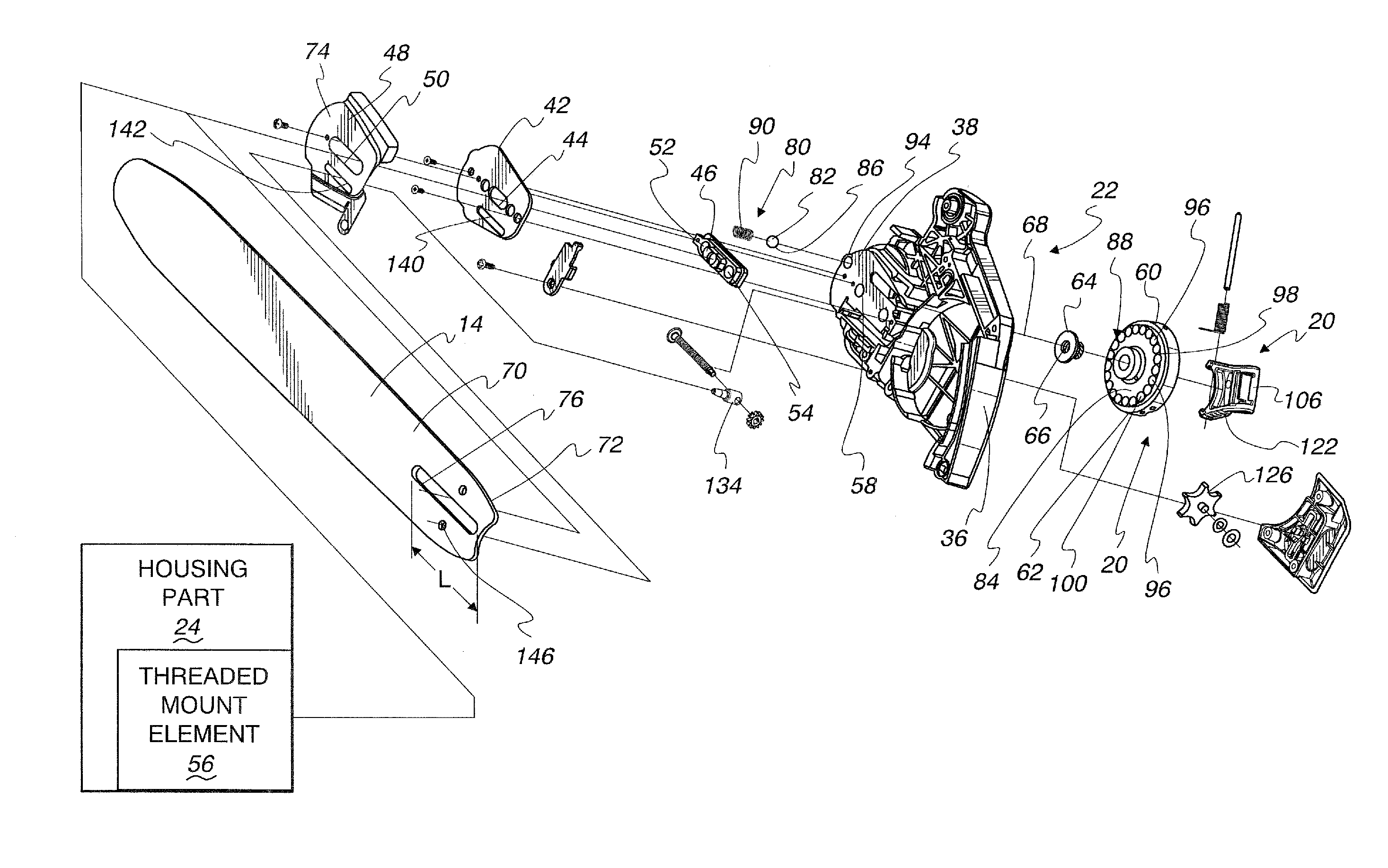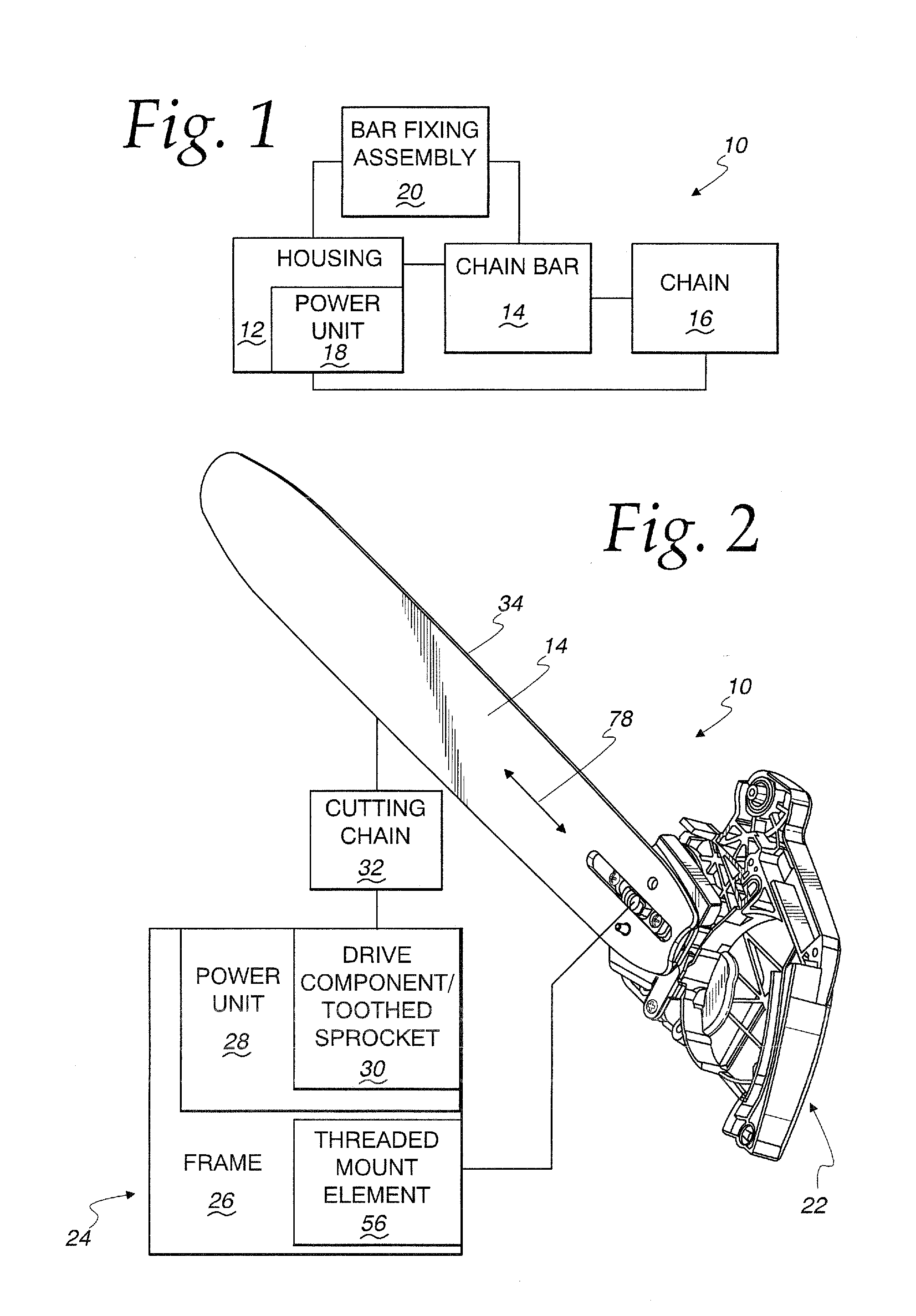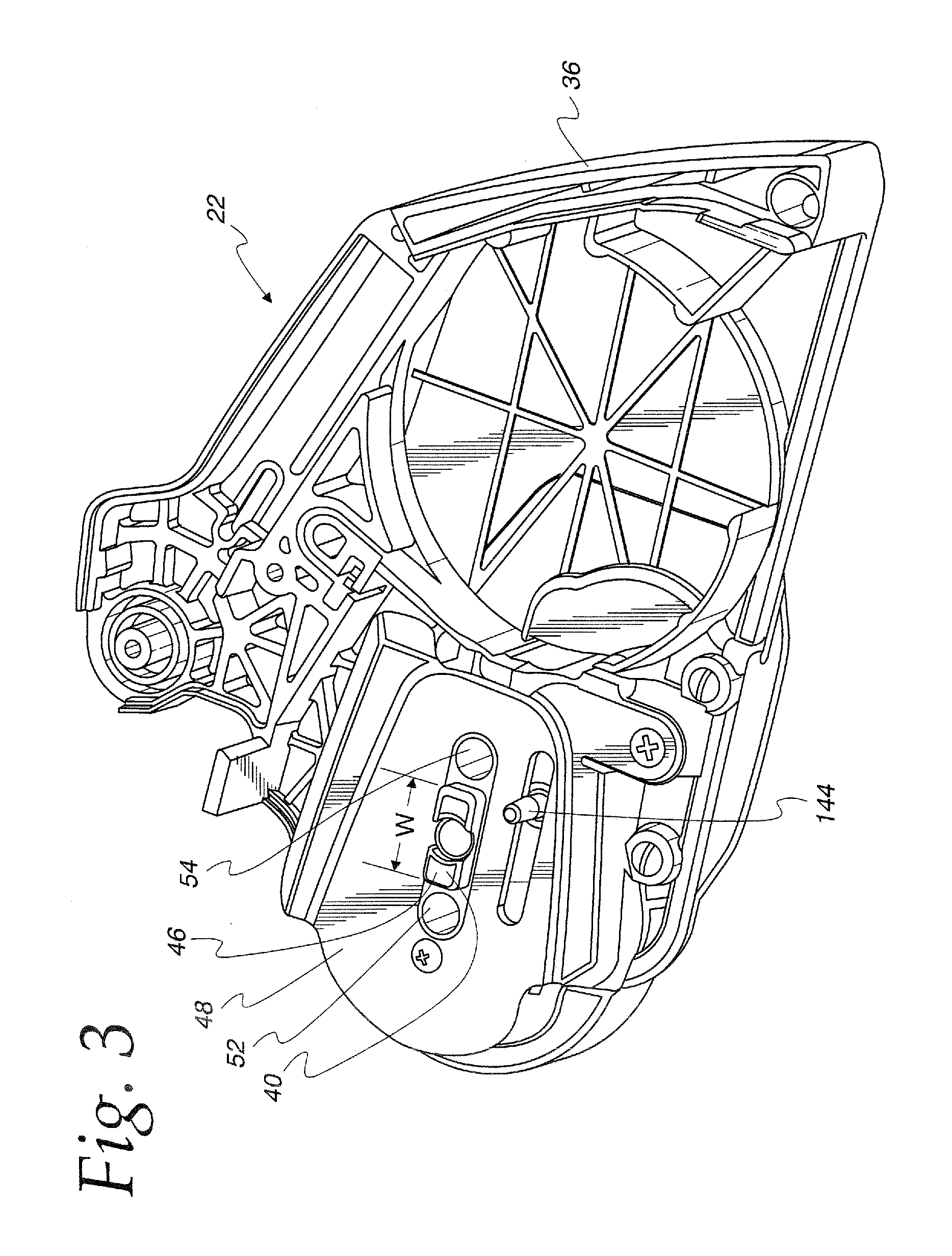Chainsaw with cutting chain tensioner
a chainsaw and chain tensioner technology, applied in the field of chainsaws, can solve the problems of chain bar shifting, chain link construction that is prone to becoming long, and chain bar may become slack, so as to reduce the play of the knob
- Summary
- Abstract
- Description
- Claims
- Application Information
AI Technical Summary
Benefits of technology
Problems solved by technology
Method used
Image
Examples
Embodiment Construction
[0054]In FIG. 1, a saw of the type suitable for incorporation of the present invention is shown at 10. The saw 10 is shown in schematic form to encompass specific component forms, as described hereinafter, and variations thereof. The saw 10 has a housing 12 to which a chain bar 14 is attached. The chain bar 14 is movable guidingly relative to the housing 12 to thereby vary tension upon a cutting chain 16 that is trained around the chain bar 14 and a component on a power unit 18 through which the saw 10 is operated. The chain bar 14 is fixed in different positions by a bar fixing assembly 20. The invention herein is focused primarily upon the bar fixing assembly 20 and associated structure. The other components may take a wide variety of different forms and are of the type generally known to those skilled in the art. Exemplary saw structures are described in detail in U.S. Pat. Nos. 6,237,229 and 7,322,114, incorporated herein by reference. These well-known components will not be des...
PUM
| Property | Measurement | Unit |
|---|---|---|
| tension | aaaaa | aaaaa |
| shape | aaaaa | aaaaa |
| spherical shape | aaaaa | aaaaa |
Abstract
Description
Claims
Application Information
 Login to View More
Login to View More - R&D
- Intellectual Property
- Life Sciences
- Materials
- Tech Scout
- Unparalleled Data Quality
- Higher Quality Content
- 60% Fewer Hallucinations
Browse by: Latest US Patents, China's latest patents, Technical Efficacy Thesaurus, Application Domain, Technology Topic, Popular Technical Reports.
© 2025 PatSnap. All rights reserved.Legal|Privacy policy|Modern Slavery Act Transparency Statement|Sitemap|About US| Contact US: help@patsnap.com



